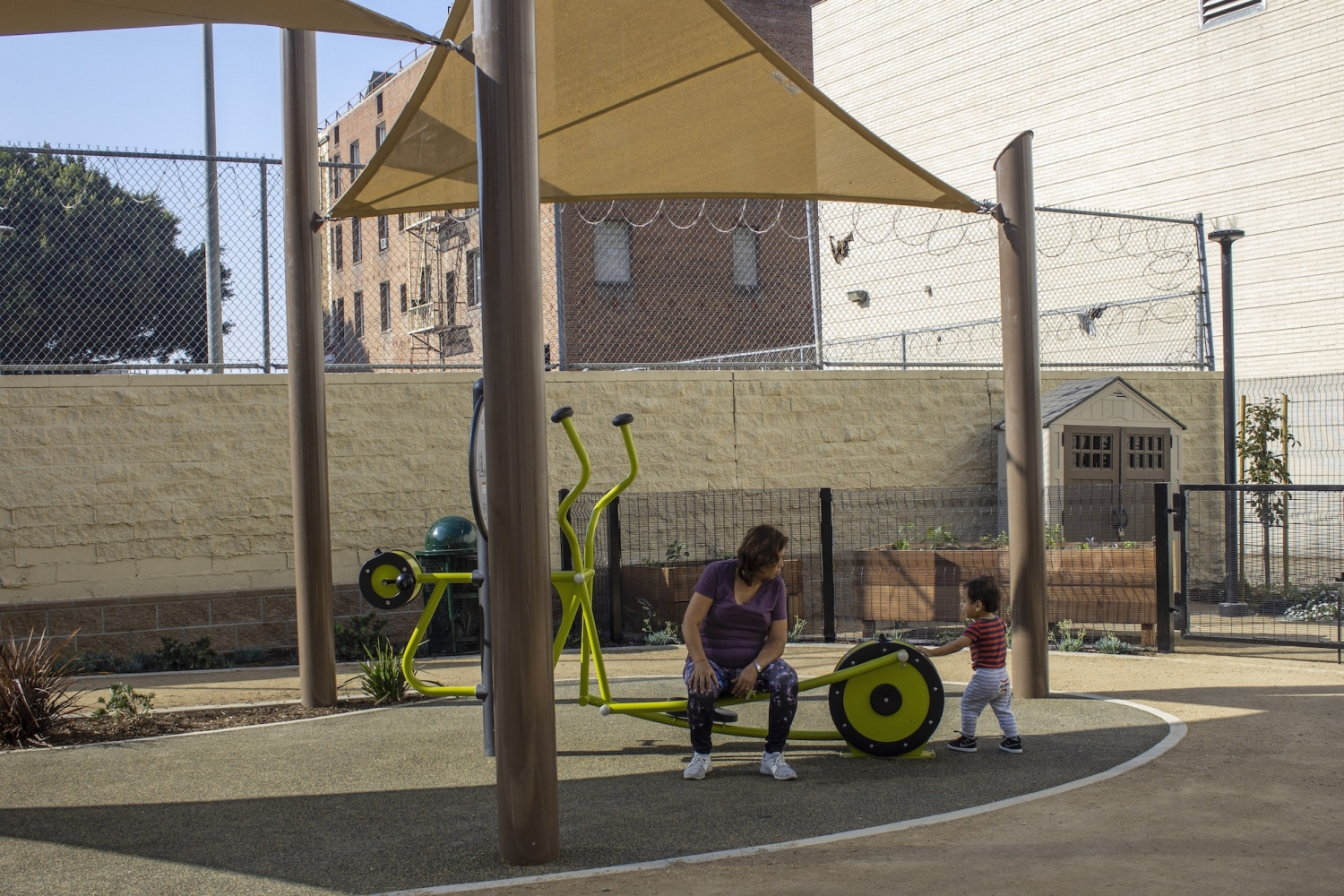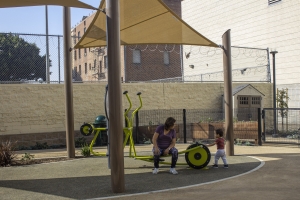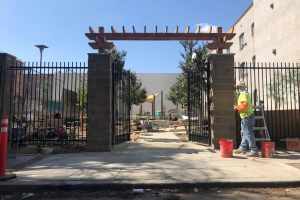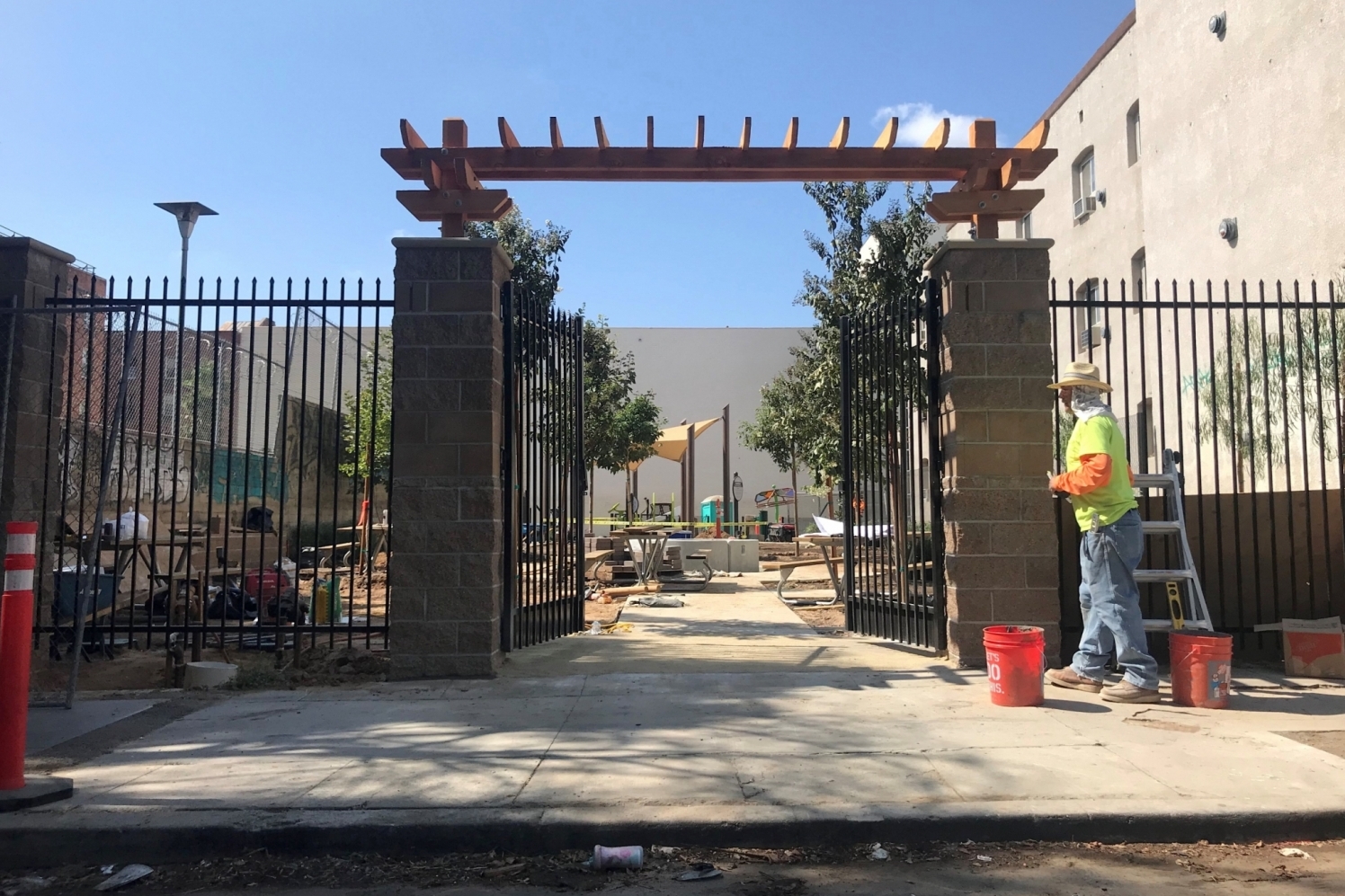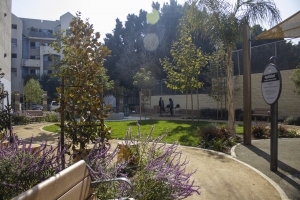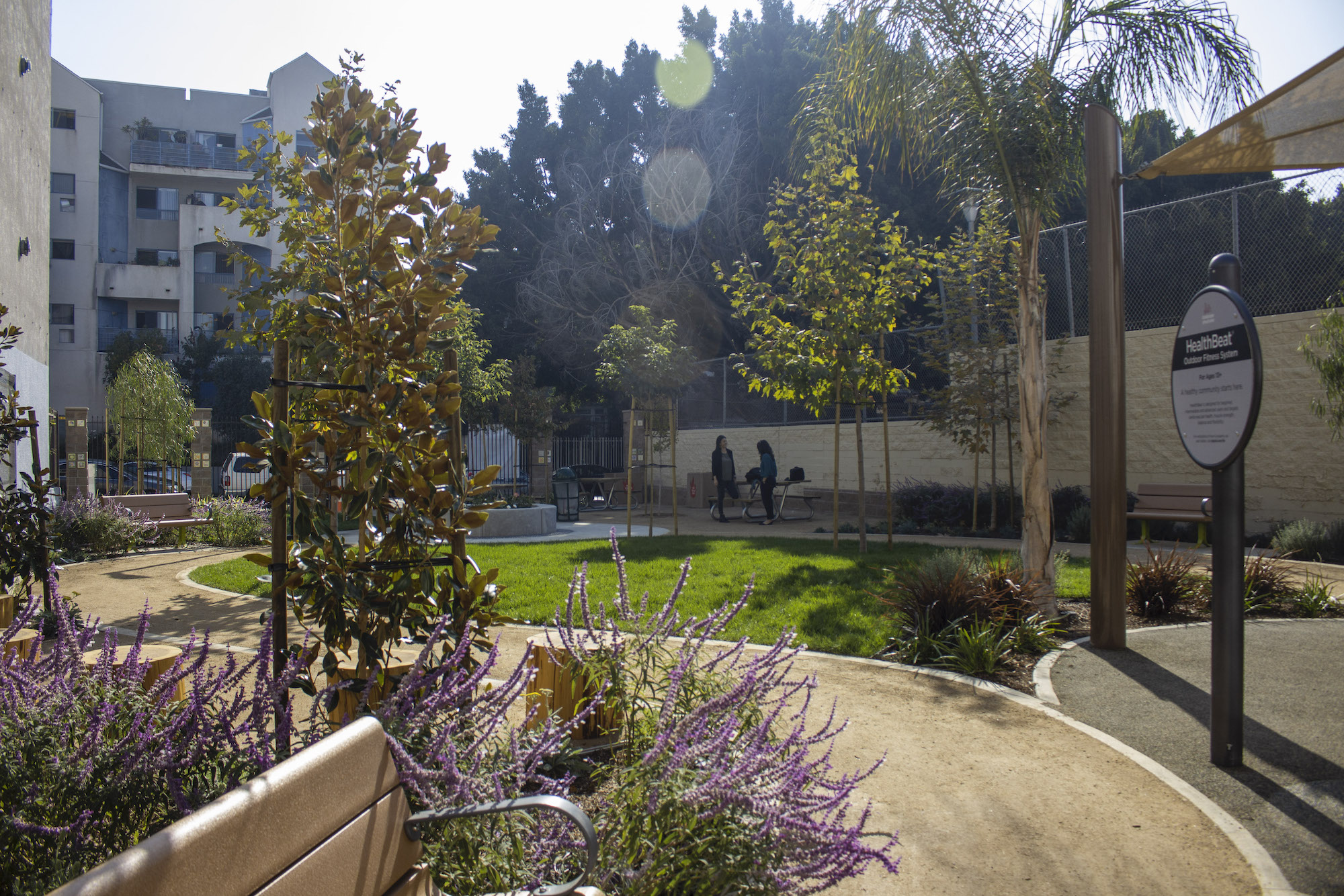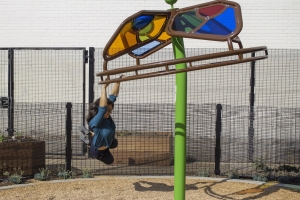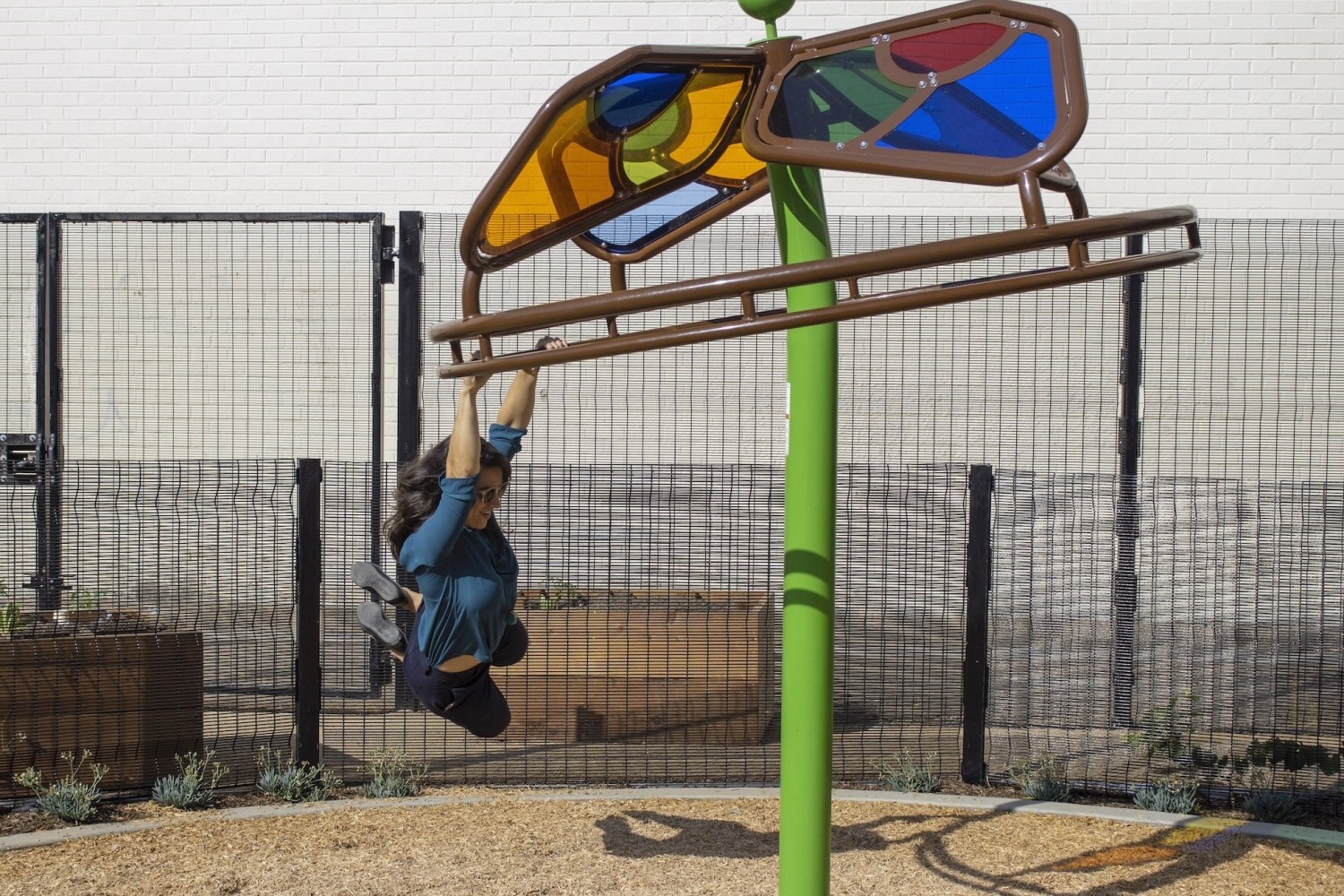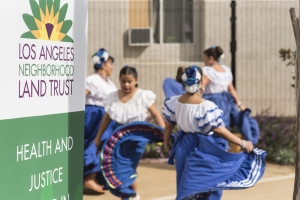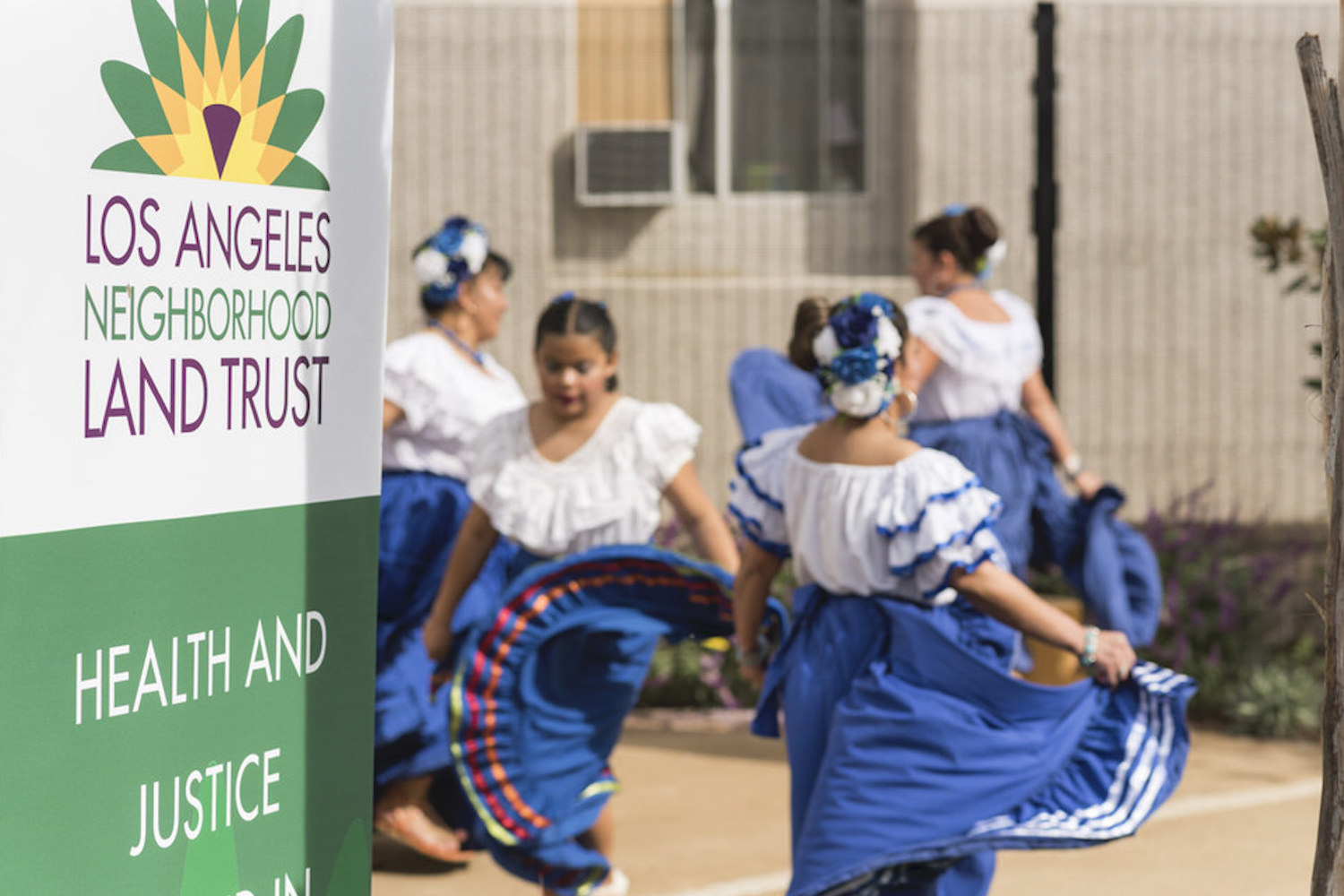By Mary Braswell
At Los Angeles’ new Golden Age Park, garden beds are raised far above ground so that visitors can tend to flowers and vegetables without stooping down.
Lawns, pathways and exercise areas are laid out on one seamless plane — a stumble-proof surface for those who move about with canes, walkers and wheelchairs.
Once a vacant lot, this tranquil green space was designed with older adults in mind — the culmination of research spearheaded by a team from the UCLA Luskin School of Public Affairs.
“It’s a little oasis in the city, less than a third of an acre,” said Urban Planning Professor Anastasia Loukaitou-Sideris, who launched the study of senior-friendly open spaces that would eventually evolve into a blueprint for Golden Age Park.
Expanding knowledge to bring real change to people’s lives is a core part of UCLA Luskin’s mission. But researchers rarely see their ideas brought to life so vividly, Loukaitou-Sideris’ team agreed.
At Golden Age Park, visitors can stroll along circular walkways, build strength and balance on low-impact exercise machines, practice their gardening skills, or simply rest in areas designed for socializing or solitude. Shade trees, roses and purple sage create a pocket of nature on a street lined with apartment buildings.
The park’s architects relied on a toolkit called “Placemaking for an Aging Population” that was created by Loukaitou-Sideris’ team of urban designers, planners and gerontologists. The guidelines were shaped by case studies from around the world as well as input from older adults just around the corner.
The team reached out to St. Barnabas Senior Center, which serves the largely low-income and minority residents of Los Angeles’ Westlake neighborhood, just west of downtown. In focus groups conducted in Spanish, Korean and English, St. Barnabas regulars said they did not feel comfortable going to nearby MacArthur Park but would welcome a safe and accessible outdoor space geared toward their age group.
Loukaitou-Sideris’ team also partnered with the Los Angeles Neighborhood Land Trust, a nonprofit devoted to increasing access to parks and gardens, particularly in communities of color. The group had been eyeing a lot at 739 S. Coronado St. — just a three-minute walk from St. Barnabas — hoping to convert it into a park.
With support from numerous foundations, government agencies and neighborhood partners, the trust purchased the lot, which had sat vacant for nearly 30 years. And with guidance from Loukaitou-Sideris’ team, Golden Age Park came to life.
“This is a model for how to work with local universities and thought leaders to put research into practice,” said Chandelle Wiebe, director of development and communications for the Los Angeles Neighborhood Land Trust.
Shortly after its November grand opening, Loukaitou-Sideris visited the park with other members of her research team: Lené Levy-Storms, associate professor of social welfare and geriatric medicine; Madeline Brozen MA UP ’11, deputy director of UCLA’s Lewis Center for Regional Policy Studies; and Lia Marshall, a doctoral candidate in social welfare.
Loukaitou-Sideris recalled the inspiration for the study. “It all started in Taiwan,” where years earlier she had visited a park crowded with older adults enjoying the benefits of outdoor recreation. In the United States, by contrast, many parks are constructed with children in mind, and the over-65 population often feels unwelcome.
“I had been doing this work on parks,” she said. “But I am not a gerontologist.”
“And I had never built a park,” said Levy-Storms, whose research in gerontology focuses on intergenerational communication.
The two created the team that applied for a grant, conducted interviews, studied park accessibility in other cultures and eventually produced the toolkit for senior-friendly open spaces, which has been honored by the American Planning Association.
“This park is so reflective of our research because it brings together urban design, planning and gerontology,” Brozen said as she and her colleagues admired the age-appropriate features of Golden Age Park:
- Pathways form a loop lined with distinctive landmarks to guide those who sometimes lose their way.
- A sloped ramp, elliptical trainer and tai chi wheel offer opportunities for a low-impact workout.
- High fences and a clear sight line to the street provide a sense of security.
- Seating areas made of temperature-sensitive materials include benches with arms for those who need to steady themselves as they sit or stand.
- A children’s play area welcomes park-goers who would like to bring younger relatives along.
- The raised gardens invite visitors to plant and prune without having to bend.
Some of the St. Barnabas seniors said they hope the park becomes a community treasure, a place where all generations can come together to make friends, learn other languages and share the vegetables grown in the garden.
And the park is welcomed by its neighbors. At the grand opening, “a woman from the apartment complex next door was very vocal about loving this park,” said Marshall, who also lives in the neighborhood. “She said she was going to be looking out for it.”
View more photos of Golden Age Park on Flickr.

